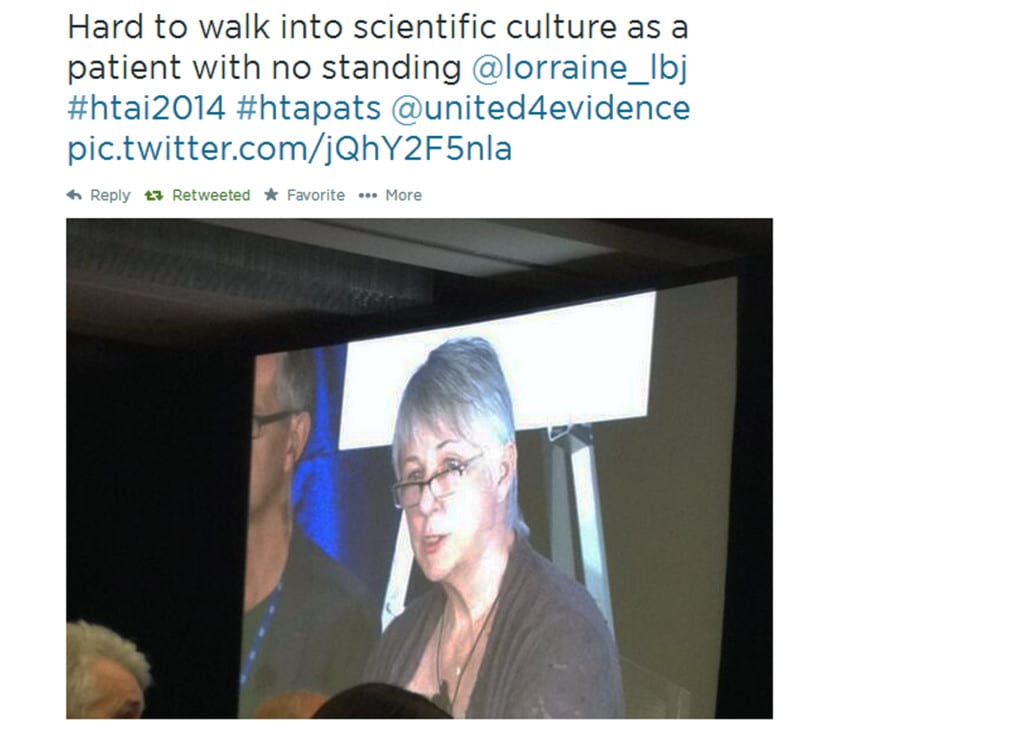LYMEPOLICYWONK: Don’t waste public money on research that doesn’t help patients

This week I spoke on a panel before an international audience of researchers, healthcare policy makers, and physicians at the HTAi (Health Technology Assessments International) conference in Washington DC. The topic was putting the patient at the center of healthcare. Dr. Karen Facey from the University of Glasgow asked the panel two questions: 1) what would effective engagement of patients in research look like, and 2) what is the biggest barrier to patient engagement in research. Let me explain why these questions are important to patients with Lyme disease.
For the past 10 years, Lyme patients have watched research funding be squandered on projects that have not improved their quality of life. I thought I would share with you my responses to these questions and other questions the audience asked.
What would effective involvement of patients in research look like?
Patients need to be involved in identifying the topic, developing the research question, creating the intervention, identifying the goals or outcomes to be studied, defining the characteristics of the patient sample, monitoring and recruiting patients, and evaluating the research. The ideal is a full partnership with patients in research.
What is the biggest barrier to patient engagement in research?
I would say–In a word, it is the scientific culture which is premised on a hierarchical scientific expertise in which patients have no standing. The barrier is rooted in the concept that research is solely a matter of science—things that can be measured. But I would say that these are not matters of pure science, rather they are a blend of science and values. Determining what research should be conducted, what the intervention should be, what the patient population should look like, and what outcomes should be measured—these are all matters that patients care about. If research does not address questions that patients care about or improve their quality of life—we should not waste public money on it.
How can we change this?
The quickest way to remove the cultural barriers for patients in research is to let patients drive the research and hire the researchers. There are no cultural barriers when the pot of money comes from the patients. The only government agency currently promoting true patient/researcher partnerships is PCORI (the Patient Centered Outcomes Research Institute), where I serve as a Patient Representative and the chair of the Patient Council. I believe their efforts to put the patient at the center are key to changing healthcare.
Lyme Research–Let’s Put the Patient at the Center
Lyme patients know these problems first hand. Researchers in Lyme disease have pursued questions that matter to them, rather than patients. Questions that promote pet theories. Questions that might be the logical next step for their line of research. Researchers look at patient populations that do not resemble real life patients being treated. They look at treatment durations that are too short and then conclude that no treatment will work. It’s time to put the patient back in the center of healthcare research for Lyme disease.
I shared the panel with Janet Wale (Public Rep PLAC. Cochrane Consumer Group. Australia); Richard Bergstrom (Director General, European Federation of Pharmaceutical Industries and Associations); Ken Paterson (past Chair of Scottish Medicines Consortium); and Victoria Wurcel (National Coordination Unit of Health Technology Assessment and Implementation, Argentina).
The LYME POLICY WONK blog is written by Lorraine Johnson, JD, MBA, who is the Executive Director of LymeDisease.org. Contact her at lbjohnson@lymedisease.org. On Twitter, follow me @lymepolicywonk.
A special thanks to Hilda Bastian for snapping and tweeting a picture of my presentation.




















We invite you to comment on our Facebook page.
Visit LymeDisease.org Facebook Page